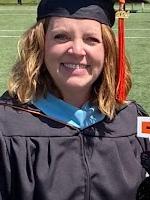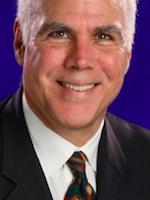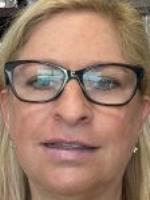One is the Loneliest Number: The Need for Collaboration in Leadership
,
Colorado Convention Center, Bluebird Ballroom Lobby, Table 9
Presenters



@astaffinspires
Session description
Purpose & objective
To the casual observe, most school systems appear as silos that are compartmentalized and departmentalized. When walking through a building you typically encounter a grade level or discipline in a specific wing. These areas of the building are typically referred to as the grade-level or content area wing. For decades we have been talking about 21st century teaching and learning while we have been in the 21st century learning. Building capacity in an age when technology is moving faster than education, district leadership no longer has the luxury to identify isolated programs where one component does not know what the other is moving toward. It is essential that school systems level the playing field and find reliable ways to establish system wide approaches for leadership to work with all contributors to moving toward a common vision. This session will identify ways in which we can not only see the trees, but also the forest as participants will be able to experience how to systematize the use of technology as a pedagogical platform to enhance and improve leading, learning and achievement in the classroom. Understanding the opportunities that technology provides students as they are already influencers and content creators, opens doors to what technology can do for learners in a meaningful way; leaders must be able to recognize these aspects when working with teachers.
According to the research of Dr. Anthony "Sonny" Magana, we must modernize educational systems with digital tools. In Magana's words: "...there are, and will continue to be , too many variables to consider, too many digital tools to juggle, and too much evidence-free propaganda confounding our thinking about technology in education". (Magana, 2017) The leadership language from the 19th and 20th centuries is no longer adequate for the 21st Century. As school systems become more interconnected and interdependent with technological advances, a new leadership model is needed to transcend the illusion of separateness and shift organizational focus to the collective- transcendent leadership.
Models: We have created a layered approach in which we have looked at the systems that exist and have established a cohesive lens in which to view them in the school system. Building capacity among the administrative leadership, as well as teacher leaders will strengthen the core and create an overarching system to support the entire school system. Nothing we do is done in isolation and referred to as an initiative; we have integrated processes into the framework of leadership at all levels. Whether it is at the building level or district level, it is essential that there is a blend of work that is tied to the same goal.
Lesson Plans or Instructional Activities/ Strategies Employed: We have identified on-going systemic professional development. As we focus on the whole child and educator we have been able to provide opportunities for them to focus attention on how we take in knowledge and learn. With a focus on culturally proficient practices and learning, we have spent time learning about the brain and how we make knowledge last. From there we transitioned to pedagogical practices that support learning. Combining the work of Robert Marzano and Zaretta Hammond, we have been able to take the T3 framework for the incorporation of technology into the classroom and apply this as the next level of professional practice and learning. As we incorporate the use of technology it has a succinct format and intention in the classroom. The staff have been in-serviced in the framework and how it values the use of technology beyond novelty and into creation. Additionally, educational leaders have been trained to turnkey this professional development into their buildings as a way to build systemic capacity.
Evidence of success will be shared through evidence of work done at the district level to support the buildings. Sharing presentations and classroom artifacts with the audience will contextualize the work that was succinctly put into place throughout the district. With the use of the teacher coaches, as well as supervisors and instructional leaders we have been able to systematize our professional learning in a way that has built capacity in our building leaderships while allowing them to maintain their own identities.
Outline
We will begin with an opportunity for participants to inventory how technology currently fits into their schools and district. They will be able to share how it is determined what technology is used and how staff are in-serviced on its use.
Attendees will have the opportunity to experience different areas of the T3 framework as exemplars as we provide learning opportunities for jigsaw and unpacking current research. Participants will be able to begin the presentation with a compass activity in which they identify their own leadership style, as well as recognize the styles of those they work closely with. As we move through our presentation participants will be engaged in an interactive learning opportunity in which they will be able to complete specific T3 learning frames that can be adapted for their own work. As participants go back to their district they will be able to use these frames as turnkey opportunities through agenda items with staff and other administrators.
The participants will experience opportunities to turn and talk throughout the presentation, as well as bounce ideas off of one another. We will ask participants to record their thoughts and ideas on a padlet or jamboard for a reference as we move through the presentation.
Participants will also have the opportunity to begin to map out leadership goals for themselves and their building as they work to build capacity amidst change.
Supporting research
Hayes Jacobs, H. (2010). Curriculum 21: Essential education for a Changing World. ASCD.
Hammond, Z. (2015). CUlturally Responsive Teaching and the Brain: Promoting Authentic Engagement and Rigor Among Culturally and Linguistically Diverse Students. Corwin.
Magana, A. (2017). Disruptive Classroom Technologies: A framework for Innovation in Education. Corwin Press.
Magana, A. (2022) Learning in the Zone. The 7 Habits of Meta-Learners. Dave Burgess Consulting, Incorporated.
Marzano, R. & Julia A. Simms, Tom Roy, Tammy Heflebower, adn PHil Warrick. (2013) Coaching Classroom Instruction. Marzano Research.
Sharratt, L. & Gale Harild. (2015)Good to Great to Innovate: Recalculating the Route to Career Readiness, K-12. Corwin.
Tomlinson, C. & Susan Demirsky Allan. (2000) Leadership for Differentiating Schools and Classrooms. ASCD.
Session specifications
Laptop: Mac, PC, Chromebook
Tablet: Android, iOS, Windows
Professional Learning Facilitator
- Build the capacity of educators, leaders and instructional teams to put the ISTE Standards into practice by facilitating active learning and providing meaningful feedback.
Empowering Leader
- Empower educators to exercise professional agency, build teacher leadership skills and pursue personalized professional learning.
Collaborator
- Use collaborative tools to expand students' authentic, real-world learning experiences by engaging virtually with experts, teams and students, locally and globally.
 Return
Return Participate and share: Poster
Participate and share: Poster  Trips and Tours
Trips and Tours